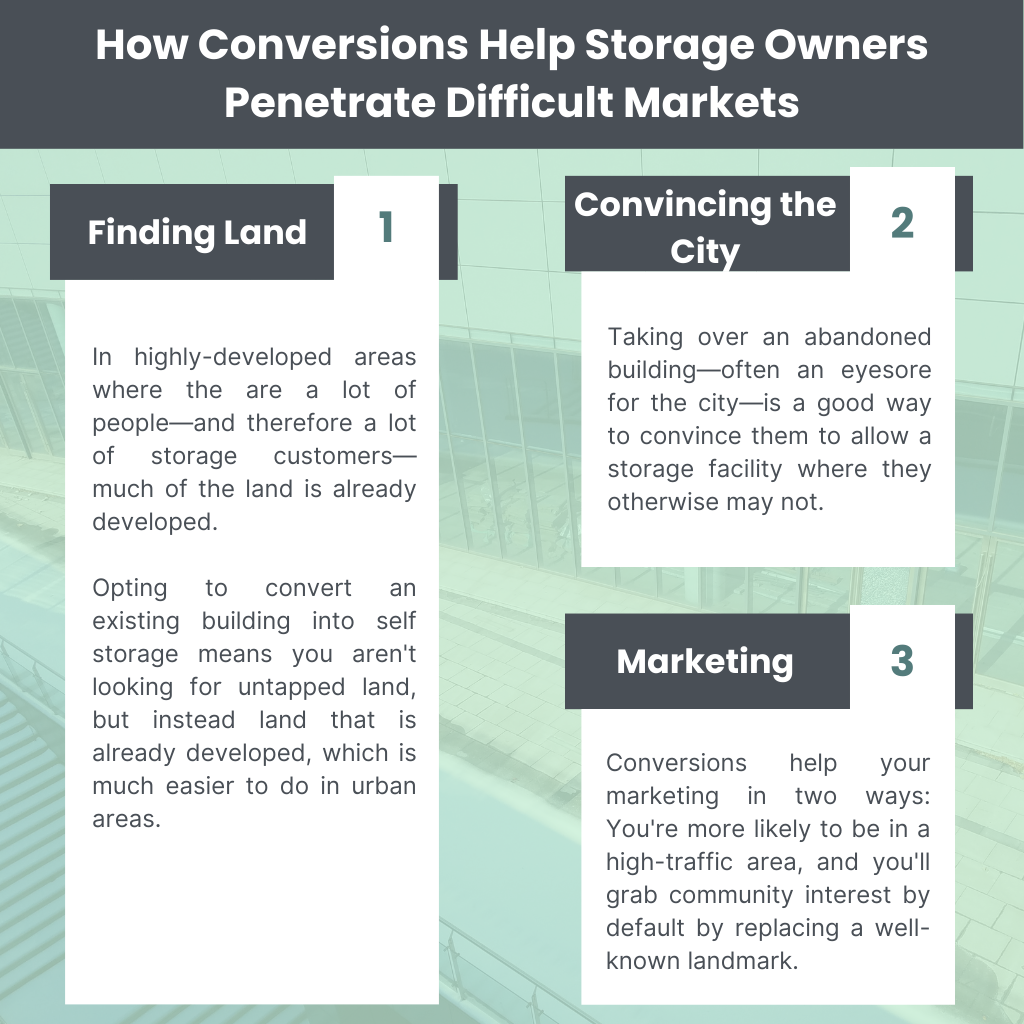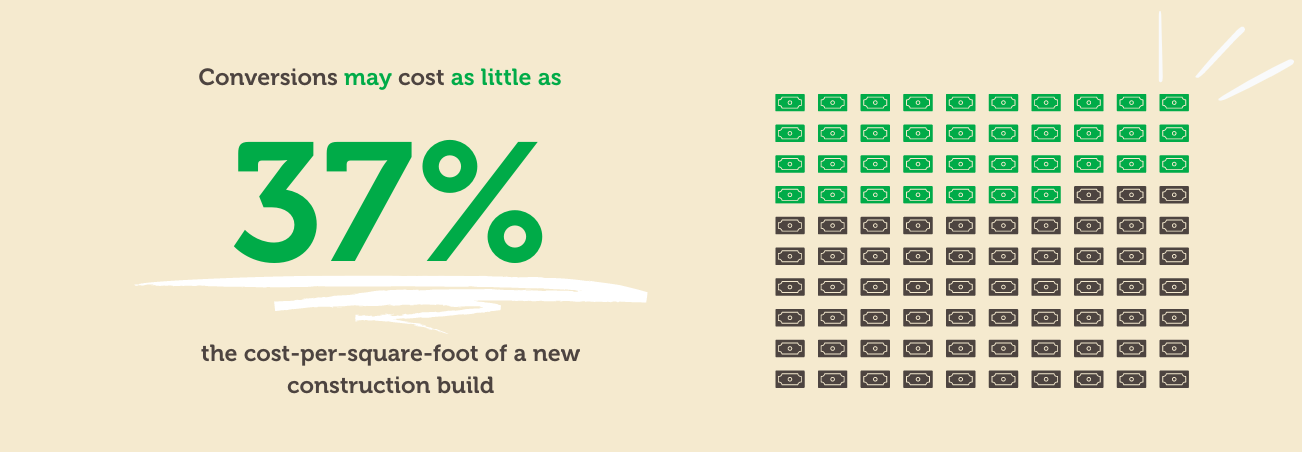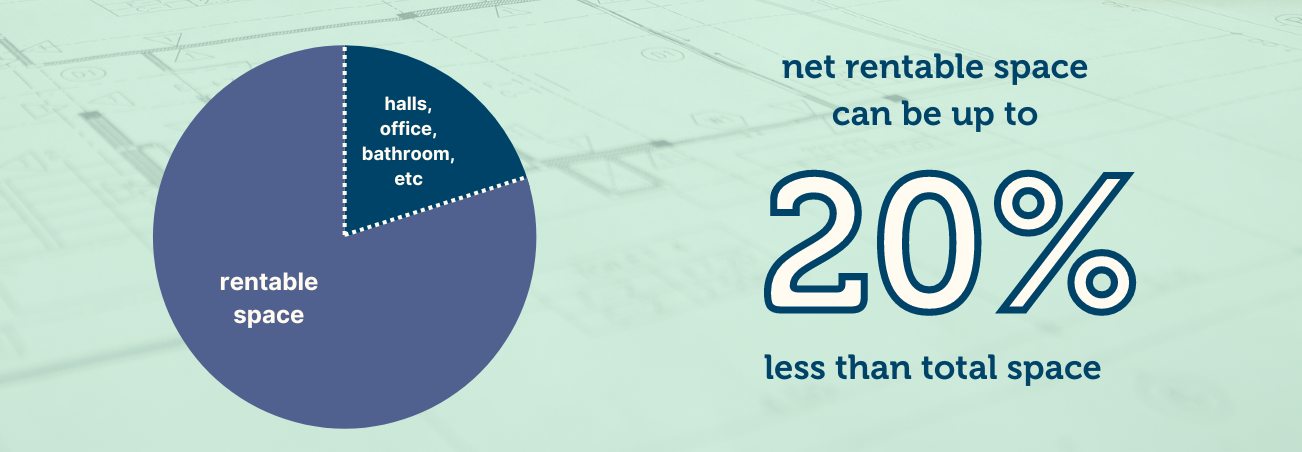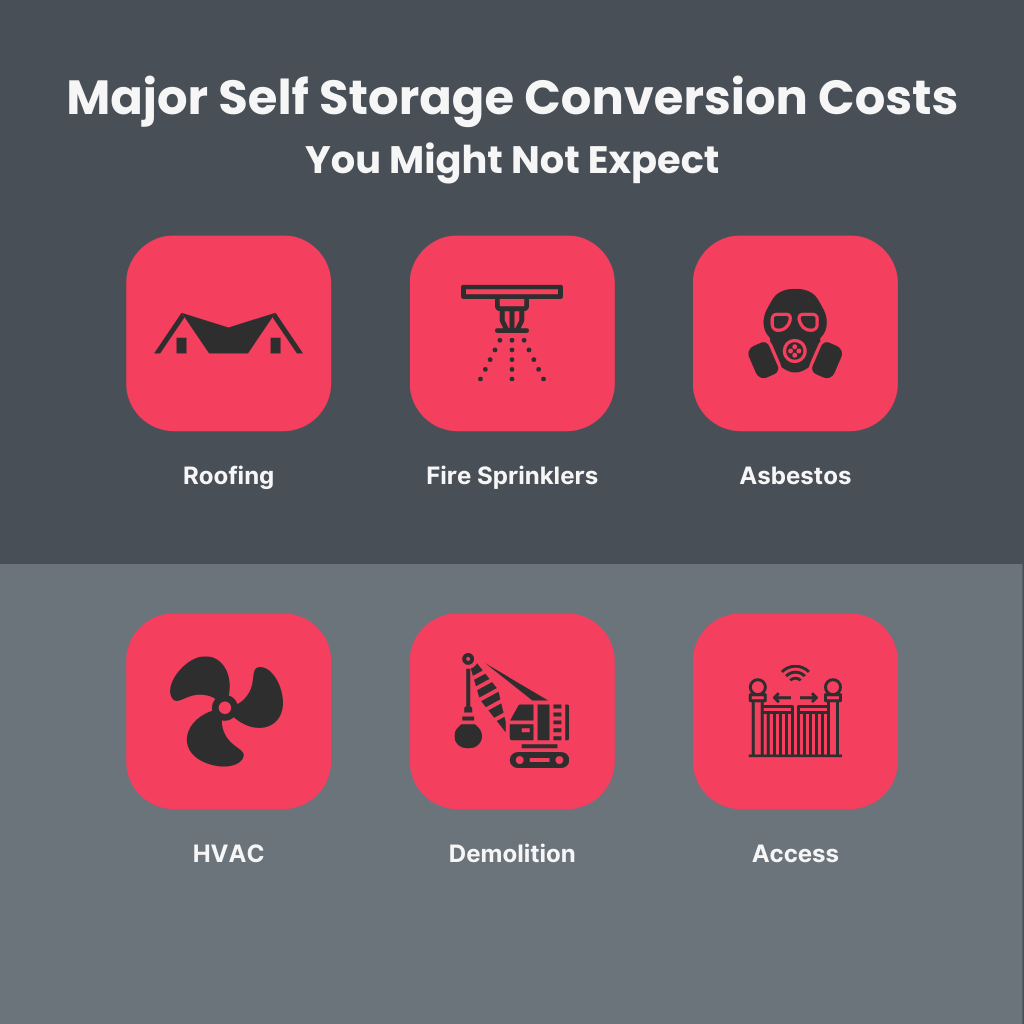Menu
February 13, 2023


How often do you see large grocery stores, office buildings, and warehouses abandoned when driving down the road in your city?
These days, it’s a pretty common sight. There are even entire online communities devoted to exploring these spaces.
There are many benefits to making use of these spaces and converting them into self storage facilities. In this article, we’ll take a look at some of the benefits, drawbacks, and other considerations to keep in mind when converting (or thinking about converting) existing buildings to self storage.
There is a shopping center near my house that used to have a grocery store in it. They moved to a more prominent location, and the building was left empty for two years.
Eventually, the building was sold and converted into a modern self storage facility.
It’s no surprise: It wasn’t a great spot for a grocery store or other large box store, but it’s ideal for people storing their stuff. The building’s framework was already there, and the city was probably tired of seeing it sitting there abandoned.
Converting an old building into a storage facility can be faster and allow you to penetrate markets you otherwise couldn’t. It can also mean easier zoning, or the zoning may even already permit a storage facility.

Let’s take a look at some of the benefits that self storage conversion projects bring to storage owners and investors.
In many cases, converting an existing building into a self storage facility will be faster than new construction. However, this can depend on the kind of building you’re converting and the building's current state of being.
If your target building is basically a shell—such as our grocery store example above—you will have less work to do to open up the interior before installing storage units.
But if your building is an office building with a lot of interior walls, this will take more time (and money) to open up properly.
Some self storage construction developers value the ability to “phase in” the construction of the self storage units, reducing vacancies and decreasing time from inception to opening.
By opening a first phase, you can start building up occupancy sooner while you work on other parts of the self storage conversion.
A common problem faced by new self storage construction is finding land in high-traffic areas in town.
Very often, self storage facilities are pushed to the edges of town. This is not an ideal position. It may happen because the city doesn’t want all of the construction in town, because the city doesn’t like the idea of a storage facility, or because there’s just no land available.
Conversion projects solve all three of these problems.
If you find an old unused building in town, the city is often more likely to approve your storage facility because they’re tired of seeing an abandoned building and because it will require less disruptive construction.

Banks may also be more open to self storage conversion projects.
According to Terry Campbell of Live Oak Bank, a bank may be more willing to lend money in these situations. This is because the borrower will typically be able to open, enter the market, and break even with less ramp-up time.
As we touched on above, cities are more likely to approve a storage conversion in high-traffic areas than they are an entirely new construction project.
Because of this, the zoning process is generally easier.
Building a new storage facility on the outskirts of town means fewer customers and more money spent on marketing.
However, when converting an existing building in an established area, you will get more drive-by traffic and accelerate your ability to rent out units.
Learn Self Storage suggests conversions as a solution to not being able to find empty land in a viable location.
Being in a visible and high-traffic area is incredibly important, and conversion projects will often help you find these spaces where new construction won’t.
Investors and business owners love to save money just as much as they like to invest it. According to Inside Self Storage, conversion projects can cost as little as 37-50% of a new build per square foot (depending on needs and construction material costs).

However, it's important to be thorough in your search. Your inspections of potential sites must be complete.
If there are unforeseen issues with a conversion site, the time and money benefits go out the window.
Old structures are prone to roof and HVAC issues, as well as problems with access points and fire code standards.
Always have your construction experts inspect a building before purchasing. You may find that a roof needs to be replaced or that the old HVAC pipes have leaks or are not compatible with new HVAC systems.
Along with infrastructure issues, old buildings are often subject to age-related or environmental problems like asbestos, leaks, and mold.
While leaks and mold are relatively easy to fix, asbestos is challenging and expensive to remedy without cutting holes in every wall in the building.
Finding these problems after the purchase of a building can lead to a massive headache and high project costs.
If you’re converting an old big box store that is basically an empty shell with exterior walls, an office, and a lot of supporting pillars in a big open space, this gives you a lot of room to work with for considerably fewer demolition costs.
If you’re converting a building with a lot of interior walls—especially if those walls are load-bearing—your demo costs just went up significantly.
How you intend for your customers to access the facility and their storage units can also create a need for a lot of demolitions and construction.

Feedback from senior members on Self Storage Talk suggests two things to keep in mind in terms of layout.
Unique building layouts can lead to unique unit mixes.
To maximize your rentable square footage, you may find yourself adding storage units that aren’t quite 5x10s or 10x10s but are somewhere close without being the next size category up.
This can be difficult to market, and they may require you to adjust your marketing plan.
The location and building might be great, but what about access to the property and each storage unit?
Depending on where the building is positioned on the land, you may find yourself with concerns about how to enable customers to best access the facility and their units.
Convenience is one of the top priorities of self storage customers, so getting this right is important. When you’re not building fresh, it can be a more challenging obstacle.

These are all generally larger buildings that allow for plenty of rentable square footage.
Some are better than others, with grocery stores and big box stores probably being the most convenient due to their large open interiors and pre-existing structure.
Pros: You can open a facility in areas where land is otherwise unavailable, zoning is generally easier, and costs and time-to-open may be lower.
Cons: There can be many unforeseen expenses due to building age, and the unit mix may be unique due to layout.
If you find an existing building that is a good conversion candidate, consider if it is in a location you would choose if it was an empty lot. Sometimes, conversions allow you to open in areas otherwise ideal but unavailable to you.
Trachte Building Systems has a handy conversion investment calculator that is also a helpful resource.
Finally, in some cases, it’s cheaper just to raze the existing building and start fresh with new construction rather than try to convert the existing facility for self storage.
If you enjoyed this article, here are some other resources you might like:
